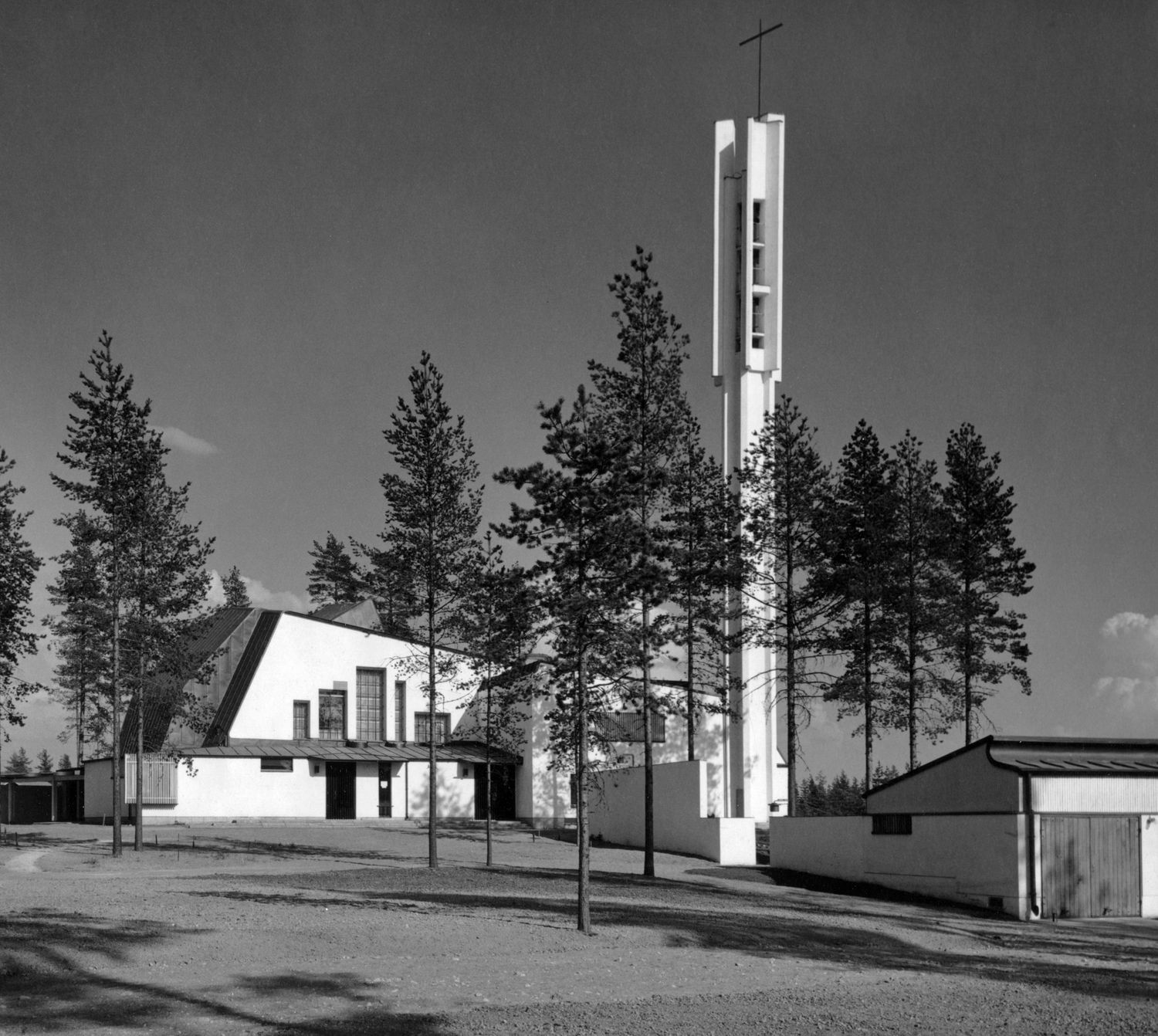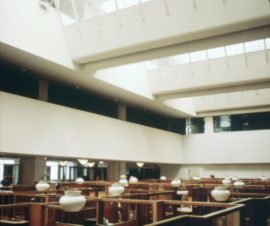- PlaceImatra
- Completion 1958
- Decade1950s
- PeriodPost-war modernism
- Year of selection1993
After the Second World War, the Finnish state-owned forestry company Enso-Gutzeit wanted to develop a new industrial community in Imatra, to replace the one in Enso which had been annexed to the Soviet Union. Three old villages in the rural municipality of Imatra that were relatively distant from each were merged: Imatrankoski, Vuoksenniska and Tainionkoski. Alvar Aalto was commissioned to prepare a master plan. The industrial community also required church amenities, and thus Aalto was commissioned in 1955 to design a new church.
Aalto worked on the design of sacral buildings throughout his career, but several of his church designs never went beyond competition proposals. Of his realised churches, the Church of the Three Crosses in Vuoksenniska is unique. The small sculptural parish church, rising up amidst pine heath, embodies the free and imaginative aspect of Aalto’s architecture. The church can be said to be Aalto’s response to the development of modern church architecture in central Europe and its significance can be compared to the Notre Dame du Haut in Ronchamp, France, designed by Le Corbusier and completed in 1954.
When presenting his design for the Vuoksenniska Church in the journal Arkkitehti, Aalto criticized contemporary church design: “The ecclesiastical activities of the industrial community must, of course, be resolved with an emphasis on the church’s social activities. Though in the world there exist several different combinations of such church activities, it is unfortunate, however, that many institutions of a social nature have often removed from church buildings their character as a public building. Very often these are kinds of intermediate forms between settlement-movement hostels, youth and parish clubs, parish halls and the actual modest church space connected to these.” (Arkkitehti, 12/1959)
The complex exterior architecture of Vuoksenniska Church conceals the tracks of the heavy sliding walls that affect the design of the building at all levels. According to Aalto: “The author has simultaneously sought two solutions to the problems, one of which lies almost exclusively within the psychological realm (the acoustic tone of the sermon) and the other purely within the technical realm (the effective separation of the church spaces from each other).” (Arkkitehti 12/1959) The main church space can be subdivided into different types of spaces, the most sacred of which is the altar end and its pews, and the organ and choir balcony. Opposite this, at the southern end of the building, one could play volleyball or badminton without disturbing the other activities, the architectural complex or the sacral nature of the church. For the everyday parish activities, a kitchen and meeting room were built in the basement.
Aalto, together with his office collaborators, designed the church interior, complete with its lamps, church collection baskets and candle holders, in the spirit of a total work of art. The church complex also comprises a 34-metre high sculptural concrete campanile, as well as a vicarage that encloses the southern courtyard. The church has been listed in several different contexts as being one of the most important of Aalto’s works. The gradual renovation of the church began in 2012 under the direction of architect Tapani Mustonen.
__________
Aalto, Alvar (1959): ”Vuoksenniskan kirkko”. Arkkitehti 12/1959.
Mustonen, Tapani; Svartström, Niina & Tanskanen Tuulikki (2013). Kolmen ristin kirkko ja pappila – rakennushistoriaselvitys 2013. Arkkitehdit Mustonen oy.
Paatero, Kristiina (1998): ”Vuoksenniskan kirkko”, Tuomi, Timo; Paatero Kristiina & Rauske, Eija (toim./eds.): Alvar Aalto seitsemässä talossa. Tulkintoja arkkitehdin elämäntyöstä / Alvar Aalto in Seven Buildings: Interpretations of an Architect’s Work. Helsinki: Suomen rakennustaiteen museo.



